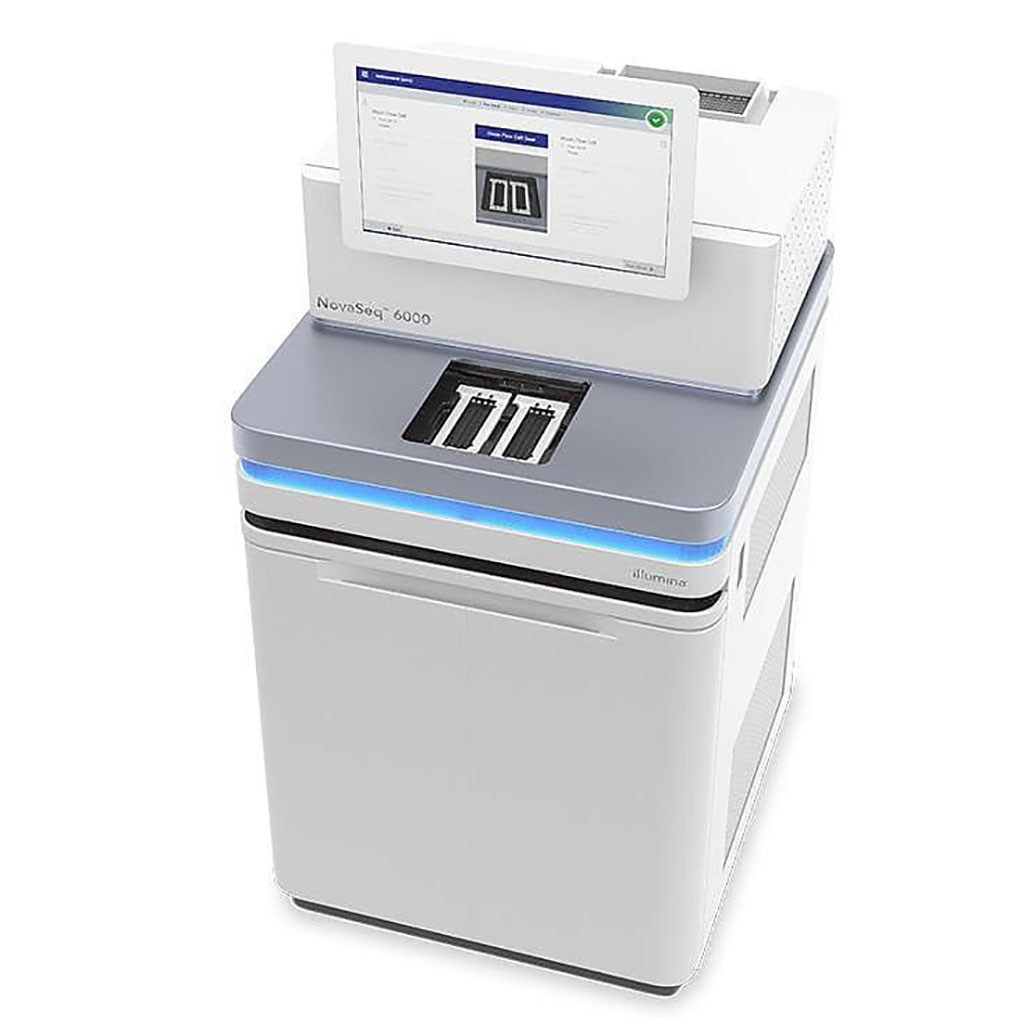Transcriptomic Analysis Reveals Proinflammatory Signatures Associated with AML Progression
By LabMedica International staff writers
Posted on 01 Feb 2022
Acute myeloid leukemia (AML) is believed to arise through a combination of genetic alterations and aberrant gene expression patterns caused by genetic and epigenetic changes, which in their composition also determine AML progression and therapy resistance.Posted on 01 Feb 2022
Prognostic validation and treatment allocation in AML are currently based on morphologic, cytogenetic, and genetic features. However, risk stratification, including relapse prediction, remains challenging, especially for patients without causative genetic aberrations.

Image: The NovaSeq 6000 Sequencing system (Photo courtesy of Illumina)
An international team of Nordic scientists led by those at Uppsala University (Uppsala, Sweden) included in a study cryopreserved sequential AML samples from 47 adult patients and 23 pediatric patients with AML. Sixty-three of the patients had de novo AML; seven patients had either a prior diagnosis of myelodysplastic syndromes, therapy-related AML, or therapy-related myelodysplastic syndromes. The median length of event-free survival (EFS) for relapse cases was 16.3 months (range, 1.1-126.0 months) for adults and 11.0 months (range, 2.3-33.6 months) for children.
Mononuclear cells from bone marrow (BM) aspirates or peripheral blood were isolated through Ficoll gradient centrifugation and cryopreserved until use. Total RNA was extracted via the AllPrep DNA/RNA/Protein Kit (Qiagen, Hilden, Germany). Library preparation (Illumina TruSeq Stranded total RNA [ribosomal depletion] libraries) and RNA-seq studies were achieved using HiSeq 2500 and/or NovaSeq 6000 systems, (Illumina, San Diego, CA, USA). Differential gene expression analysis was conducted by using Qlucore Omics Explorer 3.6 (Qlucore AB, Lund, Sweden).
The investigators reported that gene expression analysis revealed the association of short event-free survival with overexpression of GLI2 and IL1R1, as well as downregulation of ST18. Moreover, CR1 downregulation and DPEP1 upregulation were associated with AML relapse both in adults and children. Finally, machine learning–based and network-based analysis identified overexpressed CD6 and downregulated INSR as highly co-predictive genes depicting important relapse-associated characteristics among adult patients with AML.
The authors concluded that their results highlight the importance of complementary study approaches to fully elucidate the biological differences between leukemia blasts at diagnosis and their counterparts at a later stage during tumor progression. They identified novel or previously unappreciated differentially expressed genes associated with tumor progression in AML (e.g., IL1R1, CR1, GLI2), many of which are expected to promote a pro-inflammatory tumor environment. The study was published on January 7, 2022 in the journal Blood Advances.
Related Links:
Uppsala University
Qiagen
Illumina
Qlucore AB







 assay.jpg)





